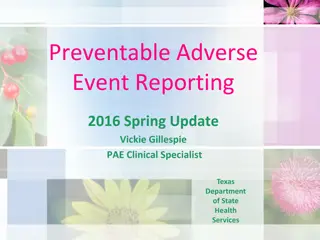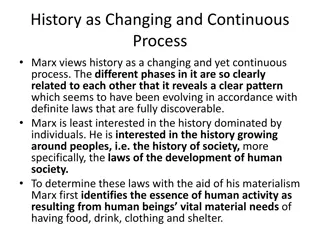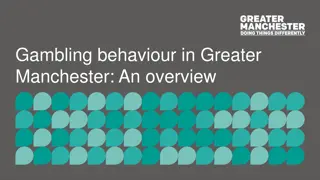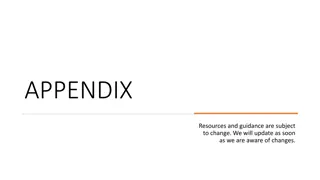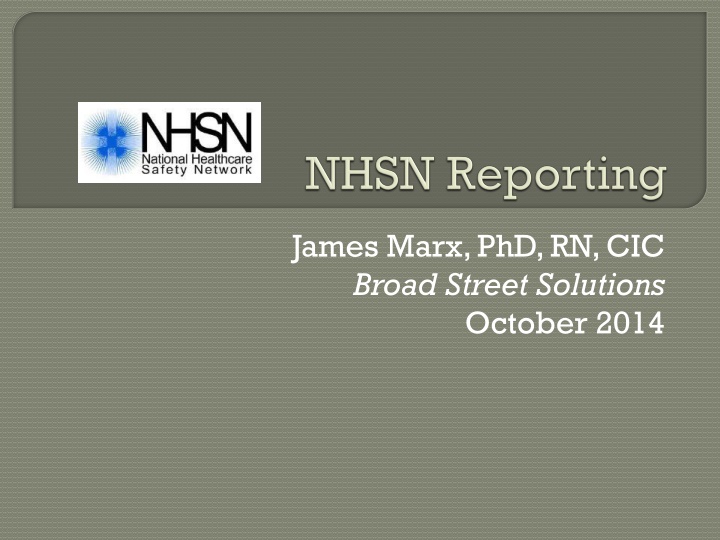
Healthcare Quality Improvement Tools and Methods for Long-term Care Facilities
Explore the use of standardized assessment tools and methods, such as NHSN, to improve quality and safety in long-term care facilities. Learn about key components, prevention measures, and outcomes related to healthcare-associated infections and patient safety. Find out how to enroll and participate in quality assessment programs for better healthcare outcomes.
Uploaded on | 1 Views
Download Presentation

Please find below an Image/Link to download the presentation.
The content on the website is provided AS IS for your information and personal use only. It may not be sold, licensed, or shared on other websites without obtaining consent from the author. If you encounter any issues during the download, it is possible that the publisher has removed the file from their server.
You are allowed to download the files provided on this website for personal or commercial use, subject to the condition that they are used lawfully. All files are the property of their respective owners.
The content on the website is provided AS IS for your information and personal use only. It may not be sold, licensed, or shared on other websites without obtaining consent from the author.
E N D
Presentation Transcript
James Marx, PhD, RN, CIC Broad Street Solutions October 2014
Lack of standardized assessment tool MDS- quality or reimbursement? NHSN Internet based Secure Standardized tools and methods Free Type of facilities currently using NHSN Acute Care Facilities Long-term Acute Care Facilities Inpatient Rehabilitation Facilities Outpatient Dialysis Facilities Ambulatory Surgery Centers Added LTC in 2012
Healthcare Patient Long-term Care Facility Biovigilance Personnel Safety Safety Components of NHSN
Long-term Care Facility Healthcare associated infection Laboratory identified (Lab ID) event Prevention process measures Modules of the LTCF Component
Urinary Tract Infections Catheter and non-catheter Laboratory identified Multi-Drug Resistant Organisms (MDRO) Clostridium difficile infection (CDI) Hand hygiene compliance Glove and gown usage
Standardize measurement tools Comparison to other providers Demonstrate commitment to Quality Assessment and Performance Improvement (QAPI) Improve outcomes Reduce cost Allows public health and payors to monitor and drive down costs Creates transparency and improved public trust Goal: 5% enrollment by 2018
Data for at least one module must be submitted for a minimum of six months in the calendar year to maintain active status Enter data with 30 days from the end of the reporting month (Ex. October 31 for September data) Confer Rights
Review and Accept NHSN Rules of Behavior Register Facility with NHSN Need CMS certification number Complete on-line training Review and Accept SAMS Rules of Behavior Secure Access Management Services Submit Identity Proofing Documentation- Notarized SAMS access has been approved Access SAMS to Complete NHSN Facility Enrollment and Survey Information Must use Internet Explorer Print, Sign, and Return Signed NHSN Agreement to Participate and Consent Form Facility Contact Information and Survey
Map locations Create monthly reporting plan Add users and assign rights
Inpatient Hospice Unit Area where palliative care and supportive care services are provided to individuals diagnosed with life limiting (terminal) conditions. Long Term Dementia Unit Area where care is provided to individuals diagnosed with dementia or related conditions, included Alzheimer's syndrome. Long Psychiatric Unit Area where care is provided to individuals diagnosed with psychiatric or behavioral-disorder. Skilled nursing/Short-term rehab (subacute) Area where primarily short-term restorative care, including medical, skilled nursing, or rehabilitation services are provided to individuals following a recent hospitalization. Long Term General Nursing Unit Area where primarily long-term support, including nursing, custodial, or rehabilitation services are provided to individuals with varying levels of chronic conditions or disabilities. Ventilator Dependent Unit Area where nursing and respiratory care is provided to individuals who require mechanical ventilation. Bariatric Unit Area where care is proved to individuals following recent bariatric surgery.
Ownership, Certification, Affiliation Average daily census Resident days and ALOS Short term Long term Number of beds Primary Service Types (Mapping) IP staff hours Surveillance Other activities
Microbiology Laboratory Practices MRDO screening C. difficile testing method Electronic Health Record Utilization
MRSA MSSA VRE C. difficile CephR-Klebsiella CRE-E. coli CRE-Klebsiella MDR-Acinetobacter
One form per MDRO or CDI Event
Based on data provided for the Lab-ID Event, each event is categorized by NHSN as Community-onset (CO) Lab-ID Event: Date specimen collected 3 calendar days after current admission to the facility (i.e., days 1, 2, or 3 of admission) Long-term Care Facility-onset (LO) Lab-ID Event : Date specimen collected > 3 calendar days after current admission to the facility (i.e., on or after day 4)
LO Events are further sub-classified Acute Care Transfer-Long-term Care Facility-onset (ACT-LO): LTCF-onset (LO) Lab-ID event with specimen collection date 4 weeks following date of last transfer from an Acute Care Facility (Hospital, Long-term acute care hospital, or Acute inpatient rehabilitation facility only) Categories are based on the date of current admission to facility and the date specimen collected
Hand Hygiene Performed Indicated Gown and Gloves Used Indicated
Symptomatic UTI With catheter Without catheter Asymptomatic bacteremia Urine and blood culture match AND Does not have clinical symptoms Will need to collect catheter-days
Laboratory ID events NHSN submission Some problems with standardization of laboratory methods Category called NH-onset (> 3 calendar days) Goal: Pilot, evaluate variability, create goal by 2018





